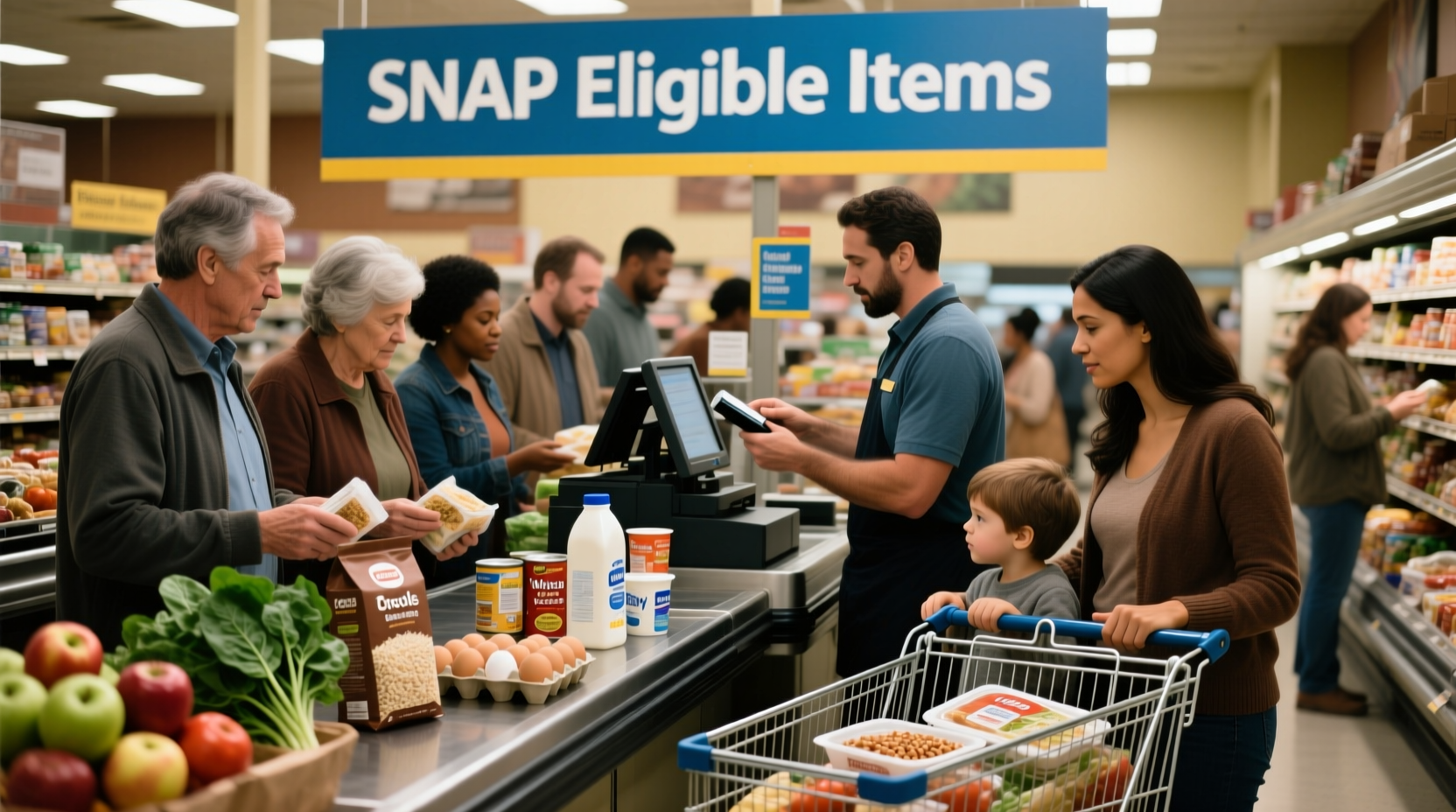Understanding exactly what you can purchase with SNAP benefits (commonly called food stamps) prevents checkout confusion and ensures you maximize your monthly assistance. This guide breaks down SNAP purchasing rules based on current USDA Food and Nutrition Service regulations, helping you shop with confidence while avoiding common mistakes that could delay your transaction.
What SNAP Benefits Actually Cover
Administered by the USDA Food and Nutrition Service, SNAP benefits are designed specifically for purchasing food items that will be prepared and consumed at home. The program follows strict federal guidelines that determine eligible purchases, with some state-specific variations for certain populations.
| Category | SNAP-Eligible Items | Non-Eligible Items |
|---|---|---|
| Produce | Fresh, frozen, and canned fruits and vegetables | None - all produce is eligible |
| Proteins | Meat, poultry, fish (fresh, frozen, canned) | Hot prepared foods like rotisserie chicken |
| Dairy | Milk, cheese, yogurt, eggs | Supplements labeled as medicine |
| Pantry Staples | Bread, cereal, rice, pasta, cooking oils | Prepared foods requiring heating |
| Special Items | Seeds and plants to grow food | Household supplies, pet food |
Shopping by Store Section: What You Can Buy
Produce Section
Every fruit and vegetable in the produce section qualifies for SNAP payment, whether organic or conventional. This includes fresh, frozen, and canned varieties. Many farmers markets now accept SNAP benefits directly through EBT machines, often with matching programs that double your purchasing power for fresh produce.
Meat and Protein Aisle
You can purchase all forms of uncooked meat, poultry, and seafood with SNAP benefits. This includes fresh cuts, frozen options, and canned fish. However, once food becomes hot or prepared for immediate consumption—like that rotisserie chicken near the deli counter—it becomes ineligible. The critical distinction is whether the food requires home preparation.
Dairy and Refrigerated Section
All milk products, eggs, and plant-based alternatives qualify for SNAP benefits. This includes various milk types, cheeses, yogurt, and butter. Items become ineligible only when they're labeled as supplements or medicines, such as certain probiotic drinks marketed as digestive aids.
Pantry and Grocery Aisles
SNAP covers all staple food items including bread, cereal, rice, pasta, and cooking oils. This also extends to non-alcoholic beverages like juice, soda, and bottled water. Baby formula and food are fully covered, recognizing the program's role in supporting nutritional needs across all age groups.
What You Cannot Purchase with SNAP
Common Misconceptions Clarified
Many shoppers mistakenly believe certain restrictions apply where none exist. For example, energy drinks like Gatorade qualify as beverages, while supplements like Ensure become ineligible only when labeled as medicine. The packaging and labeling determine eligibility, not the product's nutritional content.
Non-Food Items
SNAP benefits cannot purchase any non-food items, including:
- Household supplies (toilet paper, soap, cleaning products)
- Pet food and animal supplies
- Diapers and hygiene products
- Vitamins and medicines (even over-the-counter options)
Alcohol and Tobacco
Federal law strictly prohibits using SNAP benefits for alcohol, wine, or tobacco products of any kind. Retailers who violate this face permanent disqualification from the program.
Special Cases and Exceptions
Restaurant Meal Programs
Certain states operate Restaurant Meal Programs allowing homeless, elderly, or disabled SNAP recipients to purchase prepared meals at participating restaurants. Currently available in California, Arizona, and a few other states, these programs recognize that some beneficiaries lack cooking facilities. Eligibility requirements vary by state.
Online Grocery Shopping
Since 2020, SNAP benefits can be used for online grocery orders through USDA-approved retailers including Amazon, Walmart, and participating grocery chains. You'll need to select SNAP-eligible items during checkout and use your EBT card information at payment. Delivery fees cannot be paid with SNAP, but the food items themselves qualify.
Timeline of SNAP Purchasing Rules
The program has evolved significantly since its creation:
- 1964: Food Stamp Act establishes program with paper coupons
- 2004: Electronic Benefit Transfer (EBT) replaces paper coupons nationwide
- 2014: USDA clarifies seeds and plants for food production are eligible
- 2020: Pandemic expands online grocery purchasing options
- 2023: Current rules maintain focus on home-prepared food items
Practical Tips for Using SNAP Benefits
When shopping with your EBT card, separate eligible and non-eligible items at checkout to avoid transaction errors. Many stores have designated SNAP shopping carts or baskets to help with this process. Remember that sales tax never applies to SNAP purchases, but you'll need separate payment for non-eligible items and any amount exceeding your benefit balance.
Planning meals around seasonal produce and store sales maximizes your benefits. The USDA's Seasonal Produce Guide helps identify when fruits and vegetables are most affordable in your region.

Staying Updated on SNAP Rules
SNAP regulations occasionally change, so verify current rules through official sources. The USDA Food and Nutrition Service maintains the definitive list of eligible food items, updated regularly with program changes. Your state's SNAP agency website provides information about local programs and any state-specific exceptions to federal rules.











 浙公网安备
33010002000092号
浙公网安备
33010002000092号 浙B2-20120091-4
浙B2-20120091-4